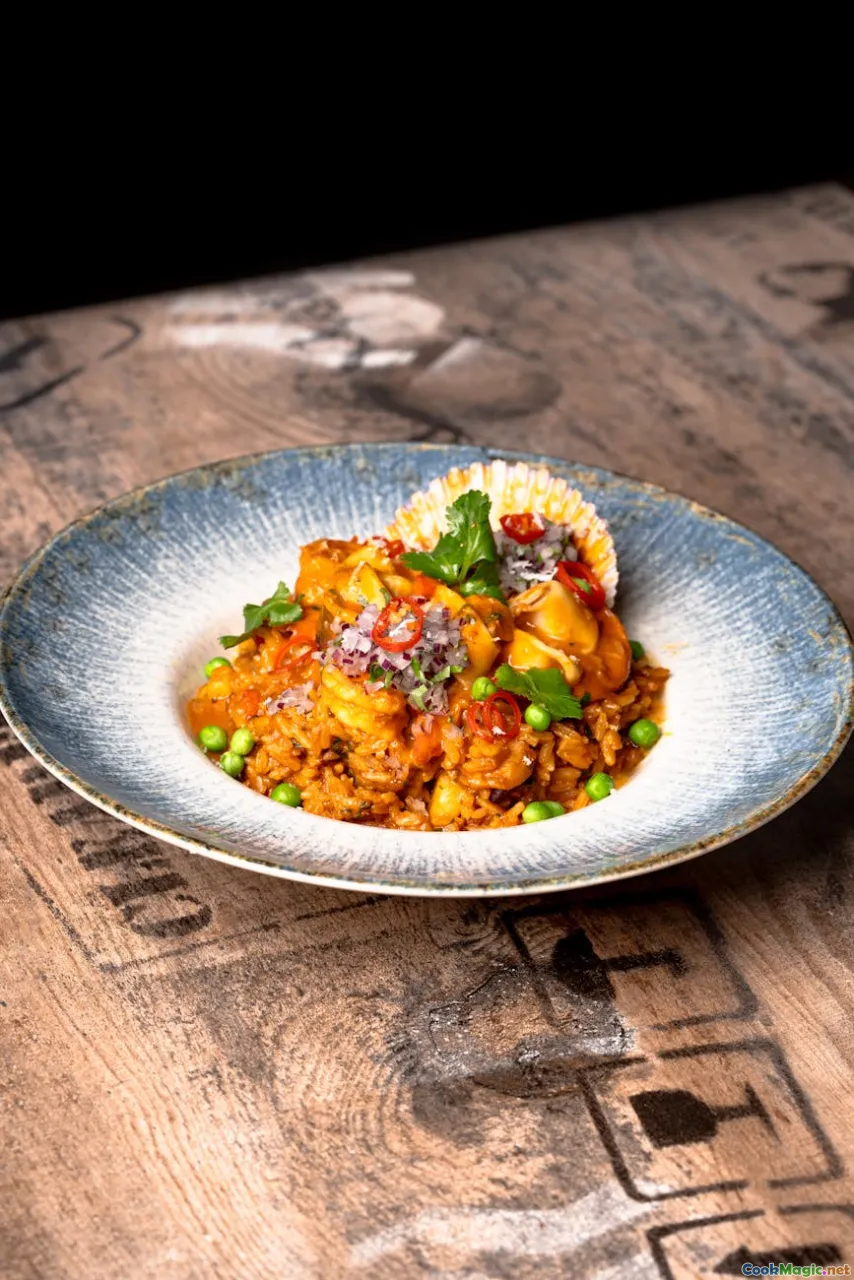The Art of Paella and Moorish Influence
7 min read Discover the rich history, cultural significance, and sensory allure of paella, shaped by Moorish influences that transformed Spanish cuisine. April 28, 2025 21:55
The Art of Paella and Moorish Influence
Imagine a vibrant, bubbling pan filled with saffron-infused rice, tender seafood, succulent meats, and a symphony of spices, all harmonizing in a dish that is as much a cultural symbol as it is a culinary masterpiece. This is the essence of paella, Spain’s most iconic dish, whose origins and evolution are deeply intertwined with the Moorish history that once flourished on the Iberian Peninsula.
Introduction: A Culinary Journey Through Time
Few dishes evoke the spirit of a place as vividly as paella does for Spain. Its fragrant aroma, rich textures, and bold flavors beckon not just the palate but also the imagination. But behind its golden hue and festive presentation lies a history marked by centuries of cultural exchange, conquest, and adaptation. To truly appreciate paella is to understand the Moorish influence that helped shape its very DNA.
The Roots of Paella: A Rustic Beginnings
Paella’s origins trace back to the rural fields and marshlands of Valencia, where farmers and laborers cooked simple, hearty meals over open fires. These early versions of rice-based dishes were humble—combining ingredients like leftover meats, beans, vegetables, and locally available herbs. The name “paella” itself derives from the Old Catalan word paella, meaning “pan,” highlighting the importance of the vessel used for cooking.
The Evolution of Ingredients
Initially, paella was a working-class dish, utilizing ingredients accessible to farmers: snails, rabbit, chicken, beans, and seasonal vegetables. The rice was soaked up with robust flavors from saffron, garlic, and local herbs, creating a filling and satisfying meal.
Moorish Influence: A Cultural Confluence
The most transformative chapter in paella’s history unfolded during the Moorish occupation of Spain (711–1492 AD). The Moors, originating from North Africa, brought with them advanced agricultural techniques, including sophisticated irrigation systems that transformed the arid landscapes of southern Spain into fertile grounds for growing rice, citrus, and spices.
Introduction of Rice and Spices
While rice had been introduced to Spain earlier, it was during Moorish rule that it became a staple. The Moors introduced new spices—cumin, coriander, cinnamon—and methods of flavoring that would forever alter Spanish cuisine.
The Influence on Cooking Techniques
Moorish culinary traditions emphasized slow cooking and layering flavors, techniques that found their way into the preparation of paella. The idea of cooking rice directly in a shallow pan over an open flame, allowing the rice to develop a crispy crust called socarrat, became a hallmark of authentic paella.
The Cultural Significance of Paella Today
Today, paella is much more than a meal; it is a celebration of Spanish identity, regional pride, and historical resilience. It’s a dish that brings families and communities together, especially during festivals like La Feria de Valencia, where the preparation of large paellas becomes a communal act.
Variations and Regional Flavors
While the classic Valencian paella uses chicken, rabbit, and beans, other regions have their interpretations—seafood paella along the Mediterranean coast, mixed paella with meats and shellfish, and even vegetarian versions. Each variation reflects local ingredients and cultural influences, yet the core principles remain consistent.
Sensory Experience: The Art of Making Paella
Cooking paella is an art form—requiring patience, attention to detail, and a sense of timing. The process begins with sautéing garlic, onions, and spices, releasing an intoxicating aroma that fills the air. Then, the rice is added, coated in the flavors, and simmered with broth until tender.
The Perfect Socarrat
One of the most treasured aspects of authentic paella is the socarrat, a caramelized, crispy layer of rice at the bottom of the pan. Achieving this requires unwavering attention—raising the heat at the right moment and avoiding stirring. The socarrat offers a rich, toasted flavor and a satisfying texture contrast to the tender grains above.
Visual and Aromatic Appeal
A well-made paella boasts a vivid saffron-yellow hue, with a medley of seafood, meats, and vegetables artfully arranged atop the rice. The smells of saffron, garlic, and roasted meats waft through the air, awakening the senses and promising a feast.
Personal Reflections and Cultural Insights
Having traveled through Spain and experienced firsthand the communal joy of sharing a freshly cooked paella, I’ve come to see it as more than just a dish—it’s a narrative of history, resilience, and cultural fusion. Sitting around a large paella pan with friends and family, I’ve tasted the flavors of centuries past, infused with Moorish spices and Spanish zest.
Concluding Thoughts: A Dish That Tells a Story
The story of paella is a testament to the enduring spirit of adaptation and cultural exchange. From its humble rural beginnings to its status as a global icon, paella embodies the rich tapestry of Spanish history, especially the Moorish legacy that shaped its ingredients, techniques, and flavors.
Whether enjoyed in a bustling Valencia square or cooked at home for a family gathering, paella remains a celebration of life, history, and the artful blending of diverse influences. As you savor each bite, remember—you’re tasting centuries of history, love, and ingenuity in every spoonful.
In the end, paella is more than just a meal; it’s a cultural mosaic—a delicious tribute to the Moorish influence that helped forge one of the world's most beloved cuisines.









